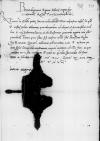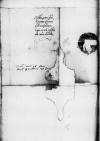Letter #626
Bona Sforza to Ioannes DANTISCUSCracow (Kraków), 1531-05-16
| received Ghent (Gandavum), [1531]-06-29 Manuscript sources:
Prints:
| ||||||
Text & apparatus & commentary Plain text Text & commentary Text & apparatus
[Reverendo in] Christo Patri, domino [
Reverende in Christo Pater, sincere nobis dilecte.
Etsi ad praesens nihil sit, quod Paternitati Vestrae scribere
debeamus, quandoquidem ab aliquot iam fere mensibus nullas Paternitatis Vestrae habuimus litteras et ob id nescimus, quomodo negotia nostra istic procedant, tamen cum istuc sese conferre vellet iste
Bene ac feliciter val[eat] Paternitas Vestra.
Datae

